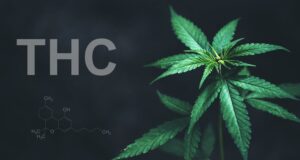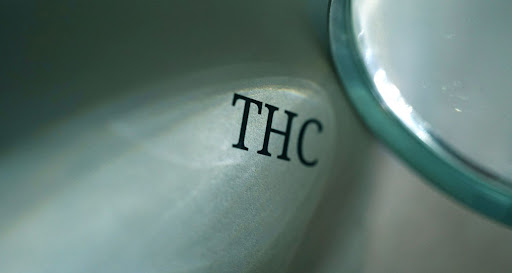Table of Contents
What Is THC?
“THC” stands for delta-9-tetrahydrocannabinol or Δ-9-THC. This is a cannabinoid molecule found in marijuana (cannabis) which has been known for a long time to be the main psychoactive ingredient (the ingredient which gets people high).
THC is one of about 500 chemicals and 100 distinct cannabinoid compounds in marijuana. Although THC is the most well-known cannabinoid molecule, cannabidiol (CBD) has also garnered significant attention.
History of THC
Historically, cannabis has been used for thousands of years. The first documented usage of cannabis was in China, where it was used for food, textiles and medicinal. Hemp was transported to Europe and then to the Americas, where it was used for recreational and religious purposes.
During the 1600s, cannabis was brought to what is now the United States. Hemp was cultivated to manufacture textiles and was sometimes used as currency. In the 1930s and 1940s, recreational usage of cannabis began to increase; it was also used for a variety of medicinal purposes.
How THC Works
THC exerts its effects by binding to the cannabinoid receptors present throughout the brain and nervous system. THC may be detectable in the body far longer than most other drug molecules, despite its euphoric effects lasting only a few hours. THC is retained in body fat and organs for 3-4 weeks. Testing hair follicles may detect THC after even longer intervals (about 90 days). Urine testing is a common detection approach; however, this has been shown to be inaccurate.
Forms of THC
 THC is often smoked as marijuana (dry leaves of the cannabis plant), but it has a variety of other applications. THC may be ingested by:
THC is often smoked as marijuana (dry leaves of the cannabis plant), but it has a variety of other applications. THC may be ingested by:
- Inhalation – This is the fastest way to get high, and the effects can be felt in as little as a few minutes. You can smoke, vape or dab to get THC into your system.
- Oral ingestion – THC can be eaten in the form of capsules, edibles, oils or tinctures. Even though this method takes longer to work, the effects tend to last longer.
- Topical application – THC can also be put on the skin in the form of lotions, salves, balms, oils and bath salts. This method usually only has local effects, so it is unlikely to have psychoactive effects. But these kinds of products might help reduce pain and swelling.
- Sublingual administration – THC can also be taken in the form of lozenges, sprays, or strips which dissolve when put under the tongue.
THC in CBD Products
Because CBD is so popular, there has been a big shift in the market toward producing a wide range of CBD products. Depending on how they are made, some of these products may have trace amounts of THC (between 0.3% and 0.9%).
This small amount is not likely to make you feel high, but some experts say that trace amounts of THC make CBD work better. But if you want a CBD product with no THC, choose one that has been tested by a third party to ensure it is pure.
Visit Stash & Co. online or call us at (647) 522-1736 to learn more about THC.




